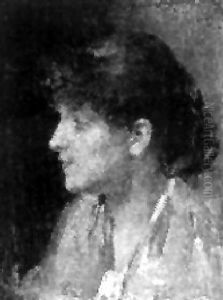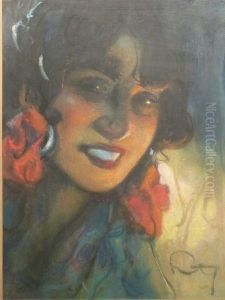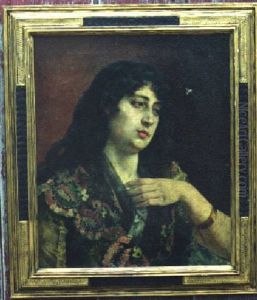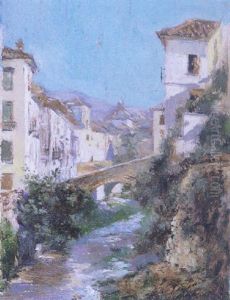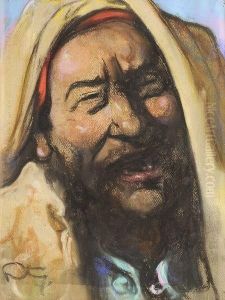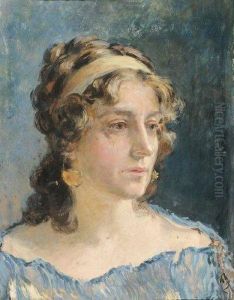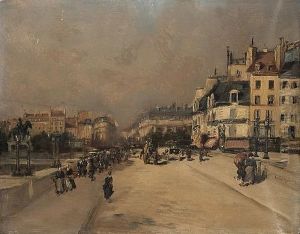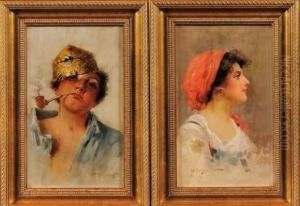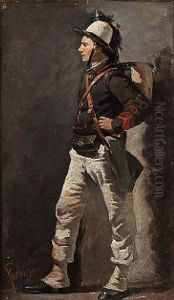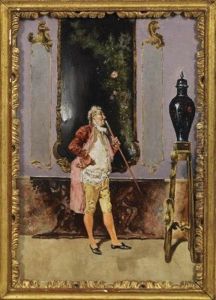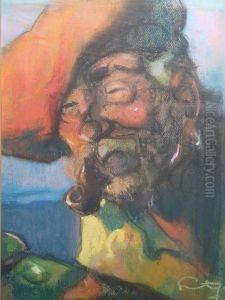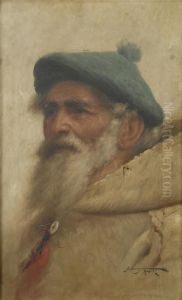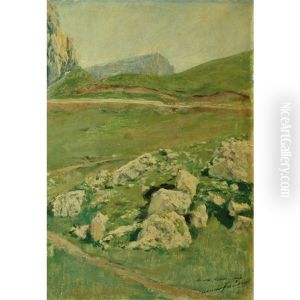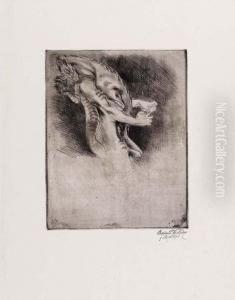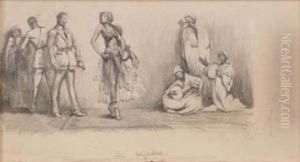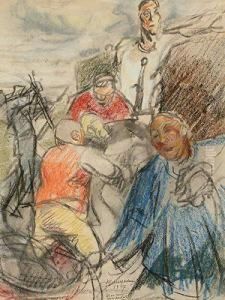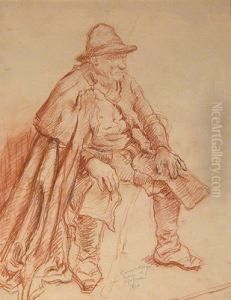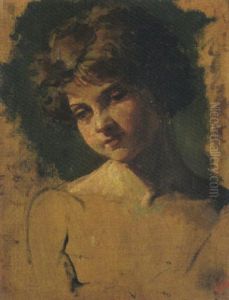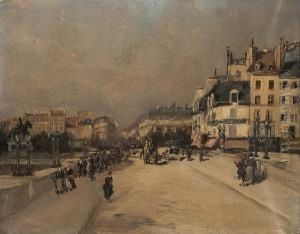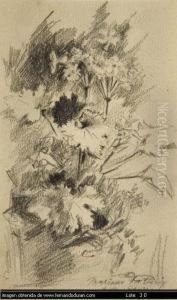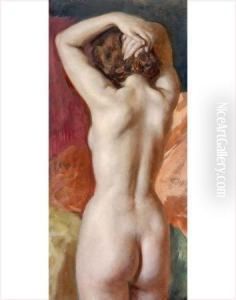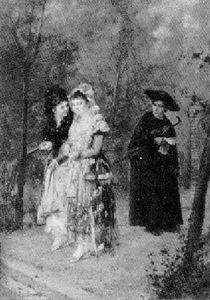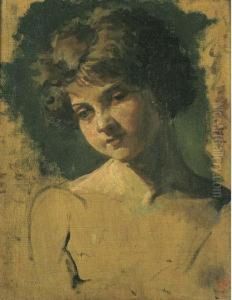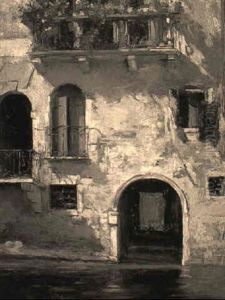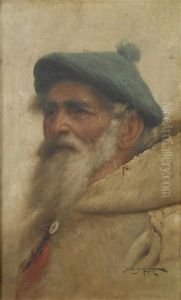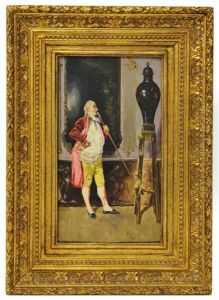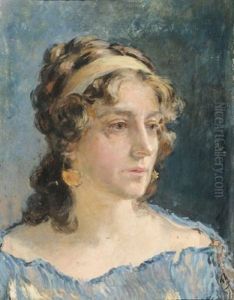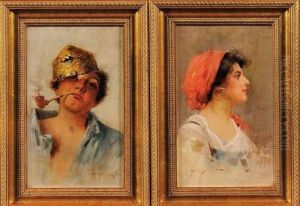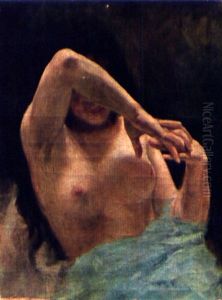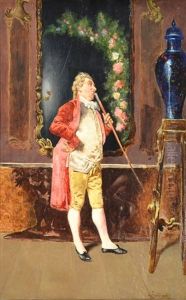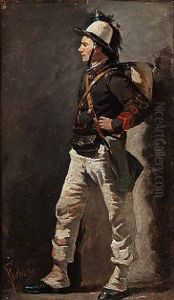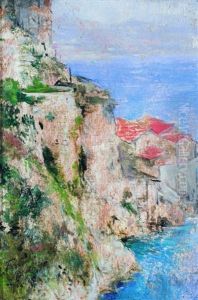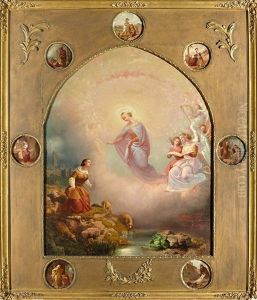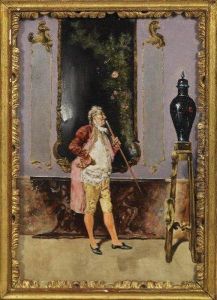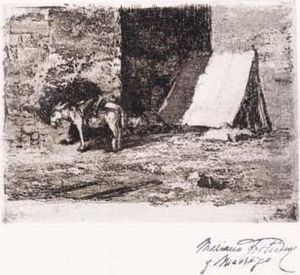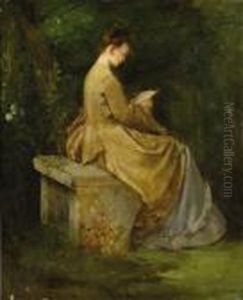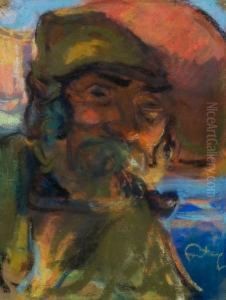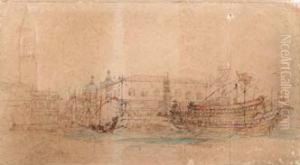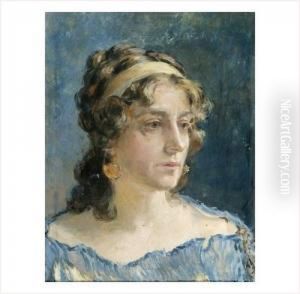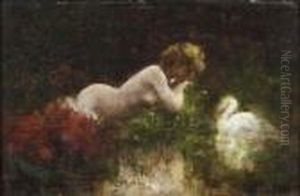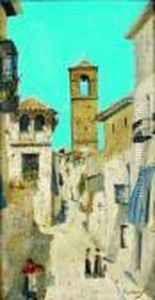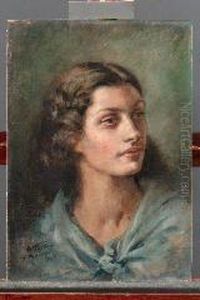Mariano Fortuny Y Madrazo Paintings
Mariano Fortuny y Madrazo was a Spanish fashion designer who was born on May 11, 1871, in Granada, Spain. He was renowned for his innovative approach to fabrics and his revolutionary designs in the world of haute couture. Fortuny was the son of the famous Spanish painter Mariano Fortuny y Marsal, which exposed him to art and design from an early age.
Fortuny moved to Paris with his family when he was a child and later to Venice, where he spent most of his adult life. He was deeply influenced by the rich culture and history of Venice, which is evident in his designs that often reflected the opulence of the Renaissance period. Fortuny was not only a fashion designer but also an accomplished painter, photographer, and stage designer. His multidisciplinary interests led him to experiment with various materials and techniques, which contributed to his unique artistic vision.
In 1907, Fortuny patented his famous 'Delphos' gown, a finely pleated silk dress that took inspiration from the chiton worn by Greek women in antiquity. The pleating process he invented allowed the silk to stretch and cling to the body's contours, providing both comfort and elegance. The Delphos gown became a symbol of timeless fashion and is considered one of the most significant contributions to early 20th-century fashion.
Apart from the Delphos gown, Fortuny was also known for his 'Knossos' scarf, luxurious velvets, and printed textiles that were often adorned with motifs inspired by classical art, nature, and the Renaissance. His work in lighting for theaters also led to the creation of the Fortuny lamp, which is still celebrated for its beauty and ingenuity.
Fortuny’s influence extended beyond fashion to the realms of theatrical set design and visual arts. He had a lifelong interest in the mechanics of stagecraft and lighting, which he applied to the design of an innovative system of stage lighting and the Fortuny cyclorama dome, which revolutionized stage design at the time.
Mariano Fortuny y Madrazo passed away in his beloved city of Venice on May 3, 1949. His legacy lives on through his timeless designs and contributions to the worlds of fashion, art, and technology. The Fortuny Museum in Venice, located in the Palazzo Pesaro Orfei, which was Fortuny's home and workshop, is dedicated to his life and work, preserving the memory of this versatile and pioneering artist.
